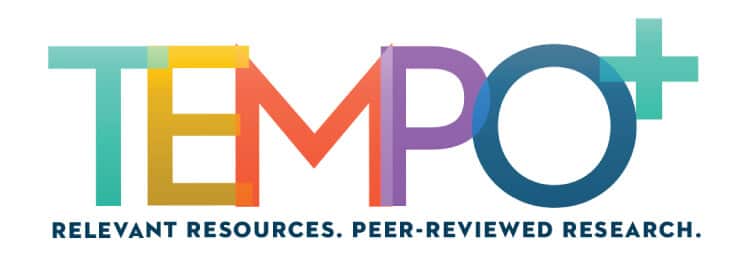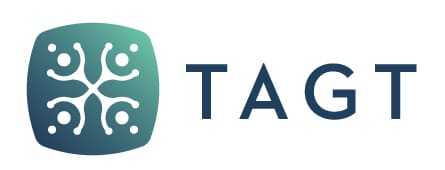Guiding the learning, development, and growth of gifted and academically advanced students can be a daunting task for parents, teachers, and other school staff. This process may include complex questions, such as how to acknowledge appropriately a child’s high level of ability while still stressing the importance of engagement and effort in learning; how to strike a balance between encouraging talent development versus being overly prescriptive in guiding learners’ development; and how to set appropriate learning goals that are responsive to a child’s individual needs and interests. Each of these questions relates in some way to motivation, so in this article I will offer a very brief overview of one theory of motivation, followed by four specific suggestions, as well as some things to ponder as teachers seek to develop and maintain each child’s motivation to achieve in the classroom and in other areas of his or her life.
What Is Motivation?
Motivation has been the topic of a great deal of investigation in fields ranging from education and psychology to business and the military. Several theoretical frameworks have been developed to understand motivation; these include achievement goal theory, self-efficacy theory, and self-determination theory (SDT). My colleagues and I have used the perspective offered by self-determination theory (Ryan & Deci, 2000) to help understand motivation among gifted learners (see, for example, Garn, Matthews, & Jolly, 2010, 2012), and this work forms some of the basis for this article. I will briefly introduce SDT below, and then I’ll suggest how it can help inform the selection of curriculum and instructional strategies to optimize learning motivation among gifted and academically advanced learners.
Motivation can be described briefly as the mental processes and inner energy that direct and regulate an individual’s behaviors. Motivation is shaped by both personal characteristics, such as perceptions, attitudes, and values, and by social and environmental variables, such as the school or classroom climate and the nature of feedback provided by parents, teachers, and peers. Although it may not be the sole contributor, academic motivation is the primary driver of student achievement. Because social and environmental factors can increase or decrease motivation, and because schools’ goal is to foster student achievement, optimizing motivation in the classroom provides an effective way to increase students’ engagement in learning and thereby increase their achievement.
The Self-Determination Theory of Motivation
The self-determination theory of motivation arranges five types of motivation on a continuum, based on the hypothesized origins of the motivation and on the degree to which these are internally or externally motivated. The five types range from intrinsic motivation through integrated, identified, introjected, and externally regulated motivation. A final category, amotivation, is not really a type of motivation but rather its absence—a state in which nothing motivates the student to engage in learning.
Intrinsic Motivation
Intrinsic motivation is viewed as the highest form of motivation. In essence, when intrinsically motivated the learner is rewarded simply by engaging in the behavior. This is what happens, for example, when a student reads about a school topic purely for pleasure, due to his or her interest in the topic and enjoyment of reading about it.
Integrated Regulation
Integrated regulation is similar, but in this case the behavior fulfills a need related to self-esteem. The word integrated refers to the incorporation of the reward within the learner’s internal systems or beliefs. For example, a child with integrated regulation reads about dinosaurs not only for enjoyment, but also because she believes herself to be knowledgeable about dinosaurs; reading more about them validates and supports this belief.
Identified Regulation
Identified regulation involves anticipation of an internal reward of some kind, such as when a student knows he needs good grades now in order to get into his first-choice college in the future. The rewards that result from a behavior primarily are important or valuable to the learner. In contrast, in introjected regulation, the rewards are more important to someone outside the learner. This may be the case, for example, when a child makes good grades to meet parent expectations, or conversely, makes poor grades in response to pressure from peers. Introjected regulation is not self-determined, but rather, relates to motivation originating from outside the individual.
External Regulation
External regulation is when student behaviors are driven solely from outside the individual. Externally regulated behaviors may be motivated either by the desire to receive a reward or by the desire to avoid a punishment.
Amotivation
Amotivation describes when a student is not motivated by anything, whether internal or external, and disengages over time from the learning activities being presented. Amotivation in the classroom may manifest itself in behaviors ranging from being consistently or purposefully off task, to skipping class or even dropping out of school. These behaviors likely are due to a number of different causes (Matthews, 2006) that build over an extended period of time, and may have to do with a failure to meet one or more of the psychological needs that are discussed in the following section.
To understand how the SDT framework informs teaching and learning, it is key to appreciate that internalized forms—intrinsic, integrated, and identified motivations—lead to more consistent engagement in learning behaviors, whereas externalized forms of motivation tend to produce inconsistent or partial engagement. To connect these forms of motivation to learning requires one other aspect of SDT—the psychological needs that are believed to underlie these motivations.
Social Environments in SDT
Deci and Ryan (2000) suggested that three psychological needs must be met in order for individuals to achieve intrinsic motivation and psychological well-being. These needs are autonomy, or a feeling of control over one’s behavior; competence, or the perception of interacting effectively with one’s environment; and relatedness, or a reciprocal feeling of care for others. These three aspects of the social environment can be met by specific instructional strategies, and many of the methods used in gifted education pedagogy are effective in part because they allow students to meet psychological needs in these areas. However, some evidence suggests that motivation becomes less internalized if even one of these three areas is not met, and this may imply that underachievement or selective achievement also result from one or more of these needs not being satisfied. Thus, it is important to consider all three needs in the classroom. Because the classroom environment and climate are the areas over which individual teachers have the most control, it makes sense to focus on these areas.
What Can Teachers Do to Enhance Learning Motivation?
Demonstrate Both Caring and High Expectations
The manner in which teachers interact with students forms a key part of the classroom climate. Just as parenting styles long have been classified as authoritative, authoritarian, or permissive, the same descriptions have been applied to teaching style (e.g., Dever & Karabenick, 2011). These categories are based on the levels of caring and of demandingness (i.e., high expectations) demonstrated by the teacher. Authoritative teaching is characterized by high levels of both demandingness and caring, whereas authoritarian teaching style has high demandingness and low caring, and permissive teaching style has high caring but low demandingness.
Consistent with the self-determination theory of motivation, permissive teaching styles lead to increased motivation but not increased achievement; academic rigor must also be evident in the teacher’s expectations.
Authoritarian teaching, characterized by high rigor but low caring, tends to produce lower achievement outcomes. Thus, teachers should strive to develop an authoritative teaching style, which requires both demonstrating care for students and holding high standards, in order to foster intrinsic forms of motivation and high student achievement. What high standards look like should be self-explanatory to most teachers of the gifted, although it must be repeated that simply adding more work is not the same as fostering high-level work. Caring can be expressed most readily through efforts to get to know each student as an individual, and this also helps in providing appropriate opportunities for self-directed learning.
Provide Opportunities for Self-directed Learning
Self-directed learning requires first that teachers know their students’ interests, and taking the time to find out about these interests also demonstrates care. Ritchotte (2015) used the broader term self-determination, specifically emphasizing the development of skills related to self-advocacy and helping students to set and attain personal learning goals. When students are provided with opportunities to develop self-determination and to guide their own learning, it reinforces intrinsic motivation because they are able to study content and ideas that they find personally interesting. It must be said that this does not mean teachers should abandon structure, which is what some may fear when they hear of self-directed learning. Rather, providing clear expectations and boundaries can enhance academic outcomes, and teachers’ content expertise can be applied to help children identify new areas of interest that build upon their existing interests.
Some assignments or units may be more amenable to student choice than others; for example, all children should memorize the multiplication tables, whether or not they find these interesting. But within this content, there may be different strategies for learning them, and students can be encouraged to try different approaches to identify the one they find most effective.
To provide structure that supports internal rather than external forms of motivation, teachers should let students help develop learning expectations for the classroom; should explain the rationale for the assignment structure being provided and offer opportunities for choice within this structure; should strive to provide information rather than to assert control in responding to student questions throughout the learning process; and should offer suggestions, hints, or resources (rather than direct answers) when students encounter roadblocks in their learning. Ritchotte (2015) suggested that students should set their own goals, with guidance from an adult, and that adult assistance in breaking larger goals into smaller, more manageable components can be particularly helpful. Further, as the following section suggests, self-directed learning processes can be enhanced by a focus on talent development.
Emphasize Personal Growth Over Innate Ability
A talent development point of view, as expressed in the position statement that is presently being refined by a task force of the National Association for Gifted Children, offers a developmental perspective for understanding how aptitudes are developed over time into accomplishments. For teachers, this means stressing to gifted and advanced students that the most effective way to develop abilities is through practice, effort, and persistence—actions that are broadly consistent with two ideas from mainstream education that have become popular in the last few years, Carol Dweck’s (2015) work on growth mindsets, and Angela Duckworth’s concept of grit. Additionally, internalized forms of motivation are enhanced by helping students to focus on comparing their performance to their own prior accomplishments, rather than comparing themselves to other learners in their classroom or school. This practice has the added advantage of being effective for students at all levels of ability, including the highly gifted, and in all learning environments from general education through highly selective school settings.
Focus on the Learning Process Rather Than Its Products
Although it is OK to support and reward the products of learning (such as grades), the learning process should be given at least as much emphasis as its products receive. Feelings of competence are reinforced when teachers recognize and support students’ use of effective learning processes such as self-initiation, choice of challenging tasks (i.e., risk-taking), improvement over time, and deep thought. Conversations with students that emphasize the learning process (e.g., asking “What was the most interesting thing you learned?” or “What part of this project did you find most challenging?”) should accompany product-related judgments such as “Congratulations, you got an A+ for this work.”
Conclusions
Together with understanding and promoting diversity, motivation is likely one of the two most challenging broad issues that teachers and the field of gifted education currently face. As the reader may surmise, motivation is a complex topic and one that scholars are still working to understand in greater detail. Fortunately, as the above overview should suggest, we do have some ideas for how to proceed.
The self-determination theory of motivation and the psychological needs that are believed to underlie individuals’ goal-directed behaviors imply that some teaching practices will be more effective than others in supporting students’ motivations to achieve. Curriculum and instruction may be more effective for gifted and advanced learners if they allow teachers to demonstrate both care and high expectations for their students and if these provide opportunities for self-directed learning. As professionals, teachers have the skills to revise even prepackaged curricula and instructional methods to accommodate these aims. Additionally, in interactions with students, teachers should take care to place as much or more emphasis on the learning process as on its products, and should emphasize individual progress and growth over time rather than making comparisons to other learners. Through thoughtful and ongoing teacher engagement with these practices, students’ internal motivation, their enjoyment of learning, and their academic achievement outcomes all can be expected to improve.
References
Dever, B. V., & Karabenick, S. A. (2011). Is authoritative teaching beneficial for all students? A multi-level model of the effects of teaching style on interest and achievement. School Psychology Quarterly, 26, 131–144. doi:10.1037/a0022985
Dweck, C. (2015, September 22). Carol Dweck revisits the ‘growth mindset’ [commentary]. Education Week. Retrieved from http://www.edweek.org/ew/articles/2015/09/23/carol-dweck-revisits-the-growth-mindset.html
Garn, A. C., Matthews, M. S., & Jolly, J. L. (2010). Parental influences on the academic motivation of gifted students: A self-determination perspective. Gifted Child Quarterly, 54, 263–272. doi:10.1177/0016986210377657
Garn, A. C., Matthews, M. S., & Jolly, J. L. (2012). Parents’ role in the academic motivation of students with gifts and talents. Psychology in the Schools, 49, 656–667. doi:10.1002/pits.21626
Ritchotte, J. (2015, Summer). Gifted students can become self-determined too! TAG Update, 1, 12–14.
Ryan, R. M., & Deci, E. L. (2000). Self‐determination theory and the facilitation of intrinsic motivation, social development, and well‐being. American Psychologist, 55, 68–78.
Dr. Michael S. Matthews is associate professor and Director of the Academically & Intellectually Gifted graduate programs at the University of North Carolina at Charlotte. He is coeditor of the Journal of Advanced Academics and serves on the Board of Directors of the National Association for Gifted Children. Dr. Matthews also is Chair-Elect of the Special Interest Group—Research on Giftedness, Creativity, and Talent (RoCGT) of the American Educational Research Association. Dr. Matthews studies research methods and policy, science learning for the gifted, motivation and underachievement, parenting, and the education of gifted and advanced learners from diverse backgrounds. He is the author or editor of five books, more than 30 peer reviewed journal articles, and numerous book chapters in gifted education. He frequently presents at state, national, and international conferences. His work has been recognized with the 2010 NAGC Early Scholar Award and the RoCGT SIG’s 2012 Michael Pyryt Collaboration Award.






